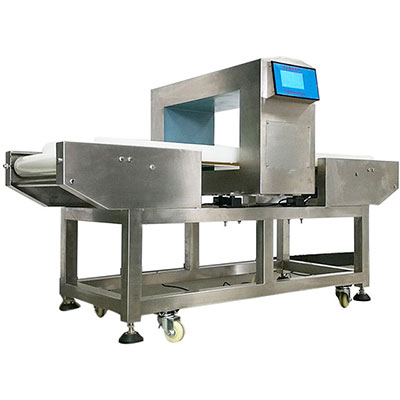©Copyright 2002-2025 JKDC Security Co., Limited. All rights reserved. Privacy Policy | Terms and Conditions Site Map
Provide One-stop Security Solution for a Safer World
There has been a regulation by the Food Safety and Inspection Service because metal contaminants were found in food products that were purchased by consumers.
In the past year, pieces of metal originating from a conveyor system were found in ready-to-eat chicken products.
Also, metal shavings were found in a package of ground turkey, and pieces of metal were embedded in a fully cooked sausage product.
However, ensuring food safety is an intensive and continuous process. Implementing and maintaining an effective food safety management system invariably demands the investment of nontrivial amounts of time and money.
Thanks to the latest innovation in the food industry today that has provided technology for the detection of metal in package food.
However, you need to contact a conveyor food metal detector manufacturer for your food manufacturing facilities with preventive controls to eliminate or reduce contaminants.
Conveyor food metal detector manufacturer combines both normal metal detector and X-ray inspection systems in ensuring food safety all in one.
Metal Detector
Metal detectors find small particles of nonferrous and stainless steel using coils wound on a nonmetallic frame and connected to a high-frequency radio transmitter.
When a particle of metal passes through the coils of a metal detector, the high-frequency field is disturbed under one coil, changing the voltage by a few microvolts. The output is used to detect metal.
Multiple transmit coils can be configured to yield a more effective magnetic field and much-improved sensitivity so that metal spheres up to 20% smaller in diameter can be detected reliably.

X-ray inspection system
X-ray inspection systems are based on the density of the product and the contaminant. X-rays are simply light waves that we can’t see.
Hence, it is in cooperated in the production line because it has a very short wavelength, which corresponds to very high energy. As an X-ray penetrates a food product, it loses some of its energy.
A dense area, such as a contaminant, will reduce the energy even further. As the X-ray exits the product, it reaches a sensor. The sensor then converts the energy signal into an image of the interior of the food product.
Foreign matter appears as a darker shade of grey and helps identify foreign contaminants, like the stone in the pickle jar.
This, of course, is just a simple explanation by conveyor food metal detector of how a highly complex technology works.
Conclusion
Understanding the above information is just the easiest way to learn about what you need to know about keeping your consumers, and your brand safe.
This set of technology will help you address regulatory compliance. Also, check any resulting physical contamination threats. Additionally, it gives you descriptions of the types of equipment that are available for best practices for certain food applications.
However, there is also a need to consult a conveyor food metal detector for professional instruction on how to maintain contaminant-free production is also important.
Lastly, always reach out to reliable and reputable suppliers for all you conveyor food metal detector needs for the best deal.